
We have become obsessed with eliminating bacteria, attacking with gels and wipes the microbes we associate with infection, illness and death. But not only are many types of bacteria actually helpful, some strains may hold the key to fighting global warming, cleaning up pollution, breaking down plastic and even developing a cure for cancer. These 12 amazing discoveries demonstrate the many ways in which microscopic organisms help maintain the health of our own bodies and the entire planet.
Gulf Oil Spill Gases Eaten by Bacteria

(images via: wikimedia commons)
Certain types of bacteria can actually clean up troublesome environmental pollutants like spilled petroleum. In fact, a specific strain called Alcanivorax drastically increases in population when an oil spill provides them with large amounts of food, so that they’re able to remove much of the oil. They’re at work on the Deepwater Horizon spill in the Gulf of Mexico right now, and while they certainly can’t undo the vast damage that has been done to this region as a result, they definitely provide a beneficial effect.
Bacteria Eat Pollution and Generate Electricity
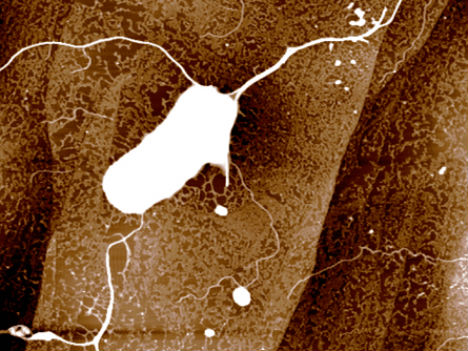
(images via: science news)
Bacteria with tiny wire-like appendages called nanowires not only digest toxic waste – including PCBs and chemical solvents – they produce electricity while they’re at it. One type in particular, called Shewanella, is a deep-sea bacteria that grows these oxygen-seeking nanowires when placed in low-oxygen environments. Researchers discovered that when the microbes’ nanowires are pricked with platinum electrodes, they can carry a current. If these capabilities can be harnessed effectively, they could one day be used in sewage treatment plants to simultaneously digest waste and power the facilities.
Geobacter Consume Radioactive Contamination
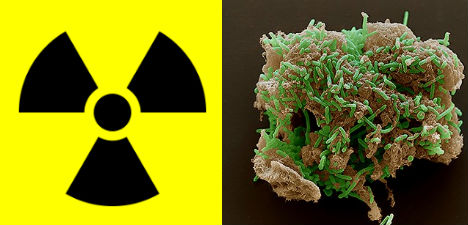
(images via: wikimedia commons, sharenator)
The nanowires grown by certain types of bacteria can also be used to immobilize harmful materials – like uranium – and keep them from spreading. A research team at Michigan State University has learned that Geobacter bacteria, which is found naturally in soil, essentially electroplates uranium, rendering it insoluble so it can’t dissolve and contaminate groundwater. These bacteria can be brought into uranium contamination sites like mines and nuclear plants in order to contain the radiation, potentially limiting the disastrous consequences of these types of spills.
Plastic-Eating Bacteria Breaks Down Bags

(image via: katerha)
Non-biodegradable and far too ubiquitous on this planet, plastic becomes a big problem when it comes to disposal. But in 2008, a Canadian student carried out a truly amazing science experiment in which bacteria were able to consume plastic. Since then, research teams have been working on developing this ability and using it to our benefit. A professor at the University of Dublin got the bacteria to metabolize cooked-down plastic bottles into a new type of plastic that’s actually biodegradable.
Earlier this year, scientists discovered that bacteria are already breaking down plastic debris in the world’s oceans on their own, though they’re not yet sure whether this will have a positive or negative effect on the environment. Items like fishing line and plastic bags are devoured by these bacteria; the problem is that the waste that the bacteria then produce could potentially be harmful to ocean ecosystems as it travels up the food chain.
Nylon-Eating Bacteria Clean Up Factory Waste
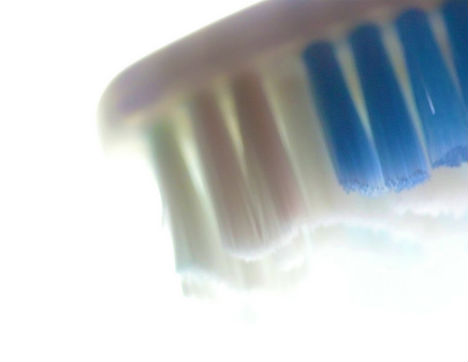
(image via: ingrid taylar)
We count on a polymer called Nylon 6 for all kinds of everyday uses like toothbrushes, surgical sutures, ropes, hosiery and strings for instruments like violins. The manufacture of this material produces toxic byproducts that get carried out in waste water – but – you guessed it – there’s a bacterium for that, too. Flavobacterium actually evolved to produce special enzymes to digest these byproducts that they didn’t have previously, and that aren’t seen in similar bacterial strains.
In fact, the ability to produce these enzymes in order to consume a material that didn’t even exist prior to the invention of nylon in 1935 is often used as evidence against the theory of creationism, which denies that any new information can be added to a genome by mutation.
Metabolizing Methane, A Greenhouse Gas
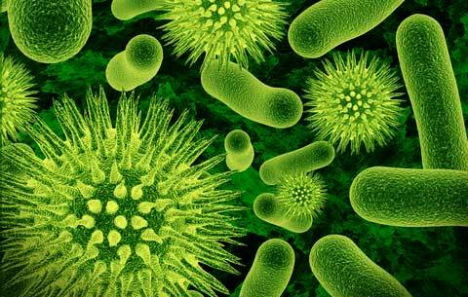
(images via: livescience)
One of the most dangerous greenhouse gases, methane is produced by all sorts of industrial and natural processes, including the decomposition of our own waste and that of livestock. Scientists fighting global warming are struggling to find ways to control the effects of methane, but one solution could come from a simple single-celled microorganism. Some types of bacteria use copper from the environment to metabolize methane, eliminating both the greenhouse gas and toxic heavy metals all at once.
Researchers are still trying to determine how to use this in real-world applications, but some options may include venting methane emissions through filters of these bacteria. What’s more, after eating the methane, the bacteria turn it into methanol – so we can harvest their waste for use as fuel.
Turning Newspapers into Car Fuel

(images via: striatic)
Microbes named T-103, found in animal waste, can produce the biofuel butanol by eating paper. Tulane University developed a method for growing the cellulose-consuming microbes so they can produce fuel in the presence of oxygen, which is lethal to other butanol-producing bacteria. This could make the whole fuel production process far less expensive and thus more potentially applicable in the real world. The researchers say that butanol produces more energy than ethanol, which is produced from corn sugar, and doesn’t require engine modifications. It can also be carried through existing fuel pipelines.
Soil-Dwelling Bacteria Kills Cancer
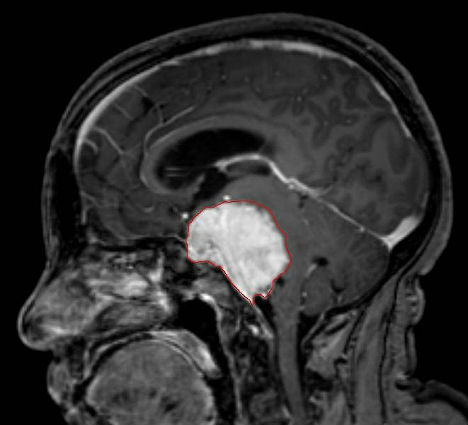
(images via: wikimedia commons)
Cancer and bacteria don’t go well together – at least, when you’re talking about immune response. But one type of bacteria, called Clostridium sporogenes, may actually be used to deliver drugs in cancer therapy thanks to its ability to target tumors. Professor Nigel Minton of the University of Nottingham has learned that C. sporogenes will only grow in oxygen-depleted environments – like the center of solid tumors. When injected into a tumor log with cancer drugs, the bacteria can help the drugs kill the tumor cells without affecting healthy tissue. Researchers expect to have a streamlined strain developed for use in a clinical trial by 2013.
Panda Poop Bacteria Makes Biofuel

(images via: wikimedia commons)
“Who would have guessed that ‘panda poop’ might help solve one of the major hurdles to producing biofuels, which is optimizing the breakdown of the raw plant materials used to make the fuels?” says Ashli Brown, Ph.D., co-author of a study on how bacteria in panda feces can break down a super-tough plant material known as lignocellulose. This discovery could speed up development of plant-based biofuels that don’t rely on food crops. Several types of digestive bacteria found in the panda feces are similar to those found in termites, which of course are pros at digesting wood.
This doesn’t necessarily mean that panda waste will suddenly be in demand for the production of biofuels – that would probably be a lost cause, given the extremely precarious status of the species. The bacteria that have been identified for their cellulose-processing abilities will be isolated and grown on a commercial scale. However, it does prove how important biodiversity really is, and that many species around the world may have more to offer than we realize.
Turning Human Waste into Rocket Fuel

(images via: elvertbarnes, wikimedia commons)
Pandas aren’t the only species whose waste may hold the key to producing fuel. With the help of the bacteria Brocadia anammoxidans, human sewage could be transformed into hydrazine, better known as rocket fuel. The bacteria naturally consume ammonia and produce hydrazine in the process. Until their discovery, scientists thought that hydrazine was only a man-made substance. However, this is less of a boon to NASA than it is to sewage treatment plants. In standard plants, waste-eating bacteria require oxygen to be pumped in with power-chugging equipment, so this development could save a lot of money.
Sulphur-Eating Bacteria Reduce Acid Run-Off

(image via: wikimedia commons)
When sulphur in mine tailings from mining operations react with water and oxygen, they produce toxic sulphuric acid, a major environmental problem which may also be contributing to climate change. Researchers at McMaster University found that two species of bacteria isolated from a mine tailings pond in northern Ontario work together to use sulphur as an energy source, producing and consuming each other’s sulphur-containing waste in a cycle that reduces the amount of toxic runoff Acid Mine Drainage (AMD). This runoff dissolves carbonate rocks and releases CO2, worsening climate change, so the more it is reduced, the less carbon dioxide gas is released into the atmosphere.
Probiotic Bacteria That Treat Depression & Anxiety

(images via: alancleaver_2000)
We already know that beneficial bacteria play an incredibly important role in our own biology, helping with everything from dental health to digestion. But probiotic bacteria may even alter brain neurochemistry, helping to treat anxiety and depression-related disorders. Researchers at McMaster University in Canada and University College Cork in Ireland demonstrated that mice fed with the probiotic Lactobacillus rhamnosus JB-1 showed a marked decrease in stress, anxiety and depression-related behaviors as well as lower levels of the stress hormone cortisol. This opens the door to potential microbial-based treatments for psychiatric disorders.





